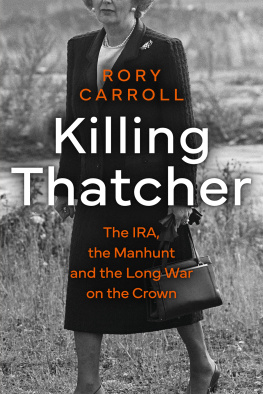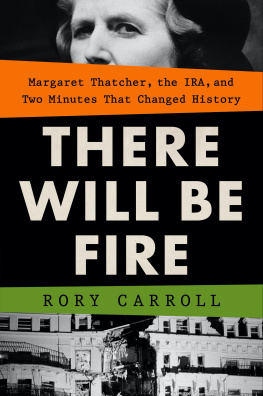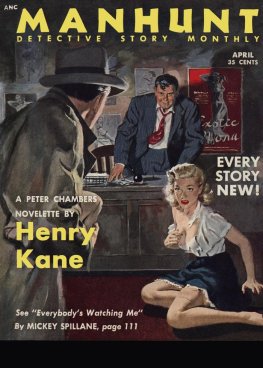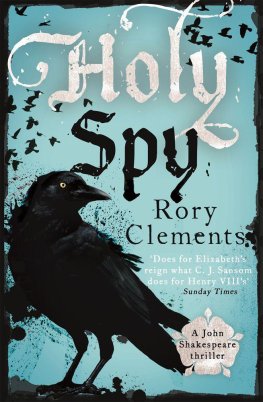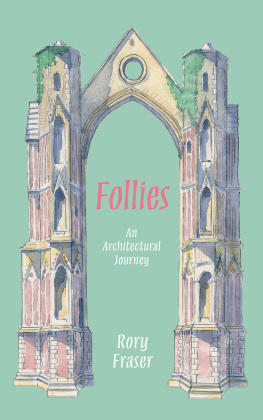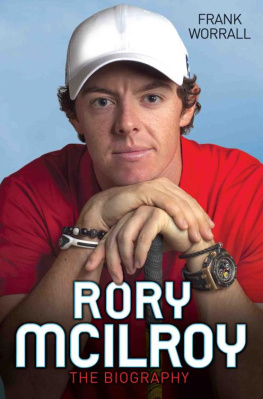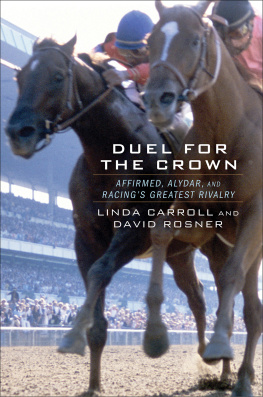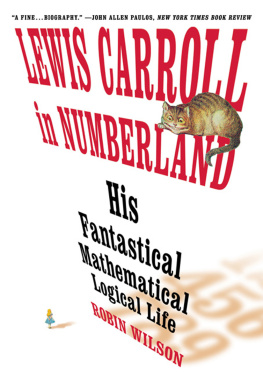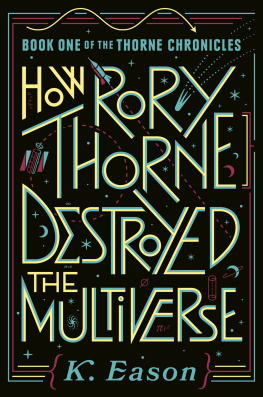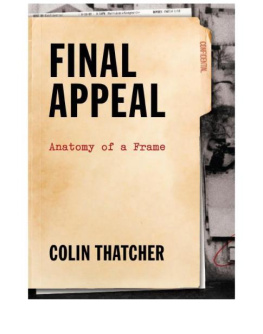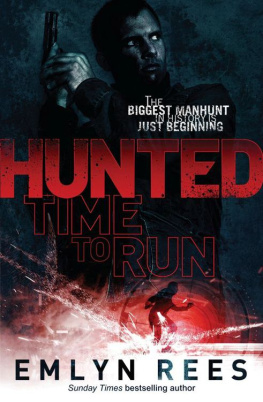Rory Carroll - Killing Thatcher: The IRA, the Manhunt and the Long War on the Crown
Here you can read online Rory Carroll - Killing Thatcher: The IRA, the Manhunt and the Long War on the Crown full text of the book (entire story) in english for free. Download pdf and epub, get meaning, cover and reviews about this ebook. year: 2023, publisher: HarperCollinsPublishers, genre: Non-fiction. Description of the work, (preface) as well as reviews are available. Best literature library LitArk.com created for fans of good reading and offers a wide selection of genres:
Romance novel
Science fiction
Adventure
Detective
Science
History
Home and family
Prose
Art
Politics
Computer
Non-fiction
Religion
Business
Children
Humor
Choose a favorite category and find really read worthwhile books. Enjoy immersion in the world of imagination, feel the emotions of the characters or learn something new for yourself, make an fascinating discovery.
- Book:Killing Thatcher: The IRA, the Manhunt and the Long War on the Crown
- Author:
- Publisher:HarperCollinsPublishers
- Genre:
- Year:2023
- Rating:5 / 5
- Favourites:Add to favourites
- Your mark:
- 100
- 1
- 2
- 3
- 4
- 5
Killing Thatcher: The IRA, the Manhunt and the Long War on the Crown: summary, description and annotation
We offer to read an annotation, description, summary or preface (depends on what the author of the book "Killing Thatcher: The IRA, the Manhunt and the Long War on the Crown" wrote himself). If you haven't found the necessary information about the book — write in the comments, we will try to find it.
Rory Carroll: author's other books
Who wrote Killing Thatcher: The IRA, the Manhunt and the Long War on the Crown? Find out the surname, the name of the author of the book and a list of all author's works by series.
Killing Thatcher: The IRA, the Manhunt and the Long War on the Crown — read online for free the complete book (whole text) full work
Below is the text of the book, divided by pages. System saving the place of the last page read, allows you to conveniently read the book "Killing Thatcher: The IRA, the Manhunt and the Long War on the Crown" online for free, without having to search again every time where you left off. Put a bookmark, and you can go to the page where you finished reading at any time.
Font size:
Interval:
Bookmark:
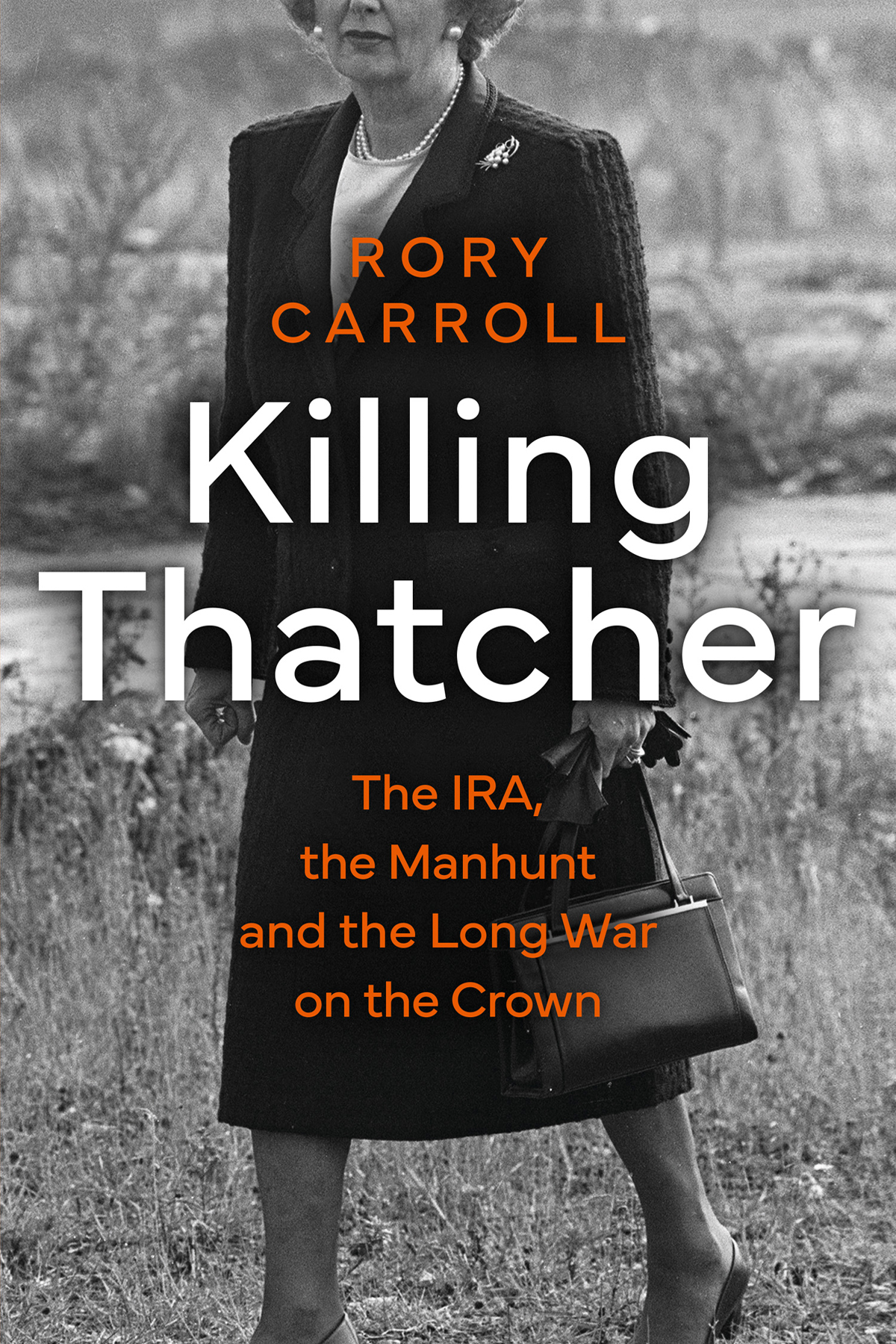

Mudlark
An imprint of HarperCollinsPublishers
1 London Bridge Street
London SE1 9GF
www.harpercollins.co.uk
HarperCollinsPublishers
Macken House, 39/40 Mayor Street Upper
Dublin 1, D01 C9W8, Ireland
First published by Mudlark 2023
FIRST EDITION
Rory Carroll 2023
Cover layout design HarperCollinsPublishers 2023
Cover photograph Trinity Mirror/Mirrorpix/Alamy Stock Photo
A catalogue record of this book is available from the British Library
Rory Carroll asserts the moral right to be identified as the author of this work
All rights reserved under International and Pan-American Copyright Conventions. By payment of the required fees, you have been granted the nonexclusive, non-transferable right to access and read the text of this e-book on screen. No part of this text may be reproduced, transmitted, downloaded, decompiled, reverse engineered, or stored in or introduced into any information storage retrieval system, in any form or by any means, whether electronic or mechanical, now known or hereinafter invented, without the express written permission of HarperCollins e-books.
Find out about HarperCollins and the environment at www.harpercollins.co.uk/green
Source ISBN: 9780008476656
Ebook Edition April 2023 ISBN: 9780008476670
Version 2023-03-02
This ebook contains the following accessibility features which, if supported by your device, can be accessed via your ereader/accessibility settings:
- Change of font size and line height
- Change of background and font colours
- Change of font
- Change justification
- Text to speech
- Page numbers taken from the following print edition: ISBN 9780008476656
To Alma and Ligi
I was twelve years old, a kid in Dublin, when the Irish Republican Army came astonishingly close to assassinating Margaret Thatcher. My family listened to the radio report in silence over breakfast.
It was common enough, in 1984, to start the day with news of the latest violence in Northern Ireland, but this was different. The bomb was in Brighton, England, and had targeted the British prime minister. It had almost killed her. It was the fifteenth year of the Troubles, that odd euphemism for sporadic killing, and we were grimly accustomed to reports of attacks on soldiers, police, and civilians. But Thatcher? The world wobbled on its axis. She was a global figure, the Iron Lady, protected by rings of security. How did the IRA get so close? How had they planned it? How did she escape? What if she had died?
So many questions, but they were never really answered. For the British, it was as if dwelling on the enormity of itpublicly, at leastwould play into the hands of the IRA. Thatcher led by example, insisting everything must go on as usual. The shock wore off, and the world recovered its equilibrium. An attack that had almost wiped out the British government gradually slipped down the news bulletins and receded into history.
My first job as a newspaper reporter was in Belfast in the mid-1990s, when the Troubles were winding down. In those days, you might occasionally hear whispers about Brighton, about how the IRA did it, but nothing definite. The operation, in the organizations parlance, was still kept tight. I moved on, joined The Guardian in London, and ended up covering other conflictsthe Balkans, Afghanistan, Iraq, Mexicoeach with their own dark secrets. In 2018, I returned to Dublin to cover Ireland, north and south, for The Guardian. Belfast was transformed, British troops long gone, boutique hotels popping up like toast. But the so-called peace walls dividing Catholic and Protestant areas were still there, and so, too, the hush over certain IRA operations. For those involved, fear of prosecution, or just the old reflex to say nothing, kept the lid screwed tight.
Then I learned that Patrick Magee, an IRA member who had been convicted of planting the Brighton bomb, was writing a memoir. A good topic for an article, I thought. The memoir shed light on his childhood and motives for joining the IRA, and his life since release from prison, but disclosed next to nothing about the Brighton operation. When I interviewed Magee, he was courteous and thoughtful, but implacable in deflecting questions about the plot to kill Thatcher. The story seemed to remain locked in that black box.
But by reviewing newspaper accounts of his 1986 trial, and monitoring the slow release of information in subsequent books, oral histories, court cases, and official documents, I was able to discern an outline of the conspiracy, its zigzag path from conception to execution, and the police hunt for the bombers. After I located a handful of former IRA men willing to talk, the sequence of events became clearer, and I realized that no article could do justice to the story.
From 2020 to 2022, research assistants and I delved into archives in Dublin, Belfast, London, and Brighton, and I conducted more than a hundred interviews with former IRA members, police detectives, bomb disposal experts, politicians, officials, and friends and relatives of key players. Some were proud to go on the record, others requested anonymity and elaborate security precautions. Some were garrulous, others were cagey and keen to find out what I had learned. Gerry Adams, who plays a prominent role in these pages, did not respond to my request to interview him. He has consistently denied being a member of the IRA and repeatedly rejected allegations of his participation in any of its operations. There were dead ends, false leads, breakthroughs. In Dublin, I found the IRA commander who sent Magee to England. In Belfast, I found the veteran IRA bomber whose name Magee borrowed as a pseudonym. Interviews took place in dingy flats, dive bars, plush offices, and the occasional fancy restaurant, not least that at the Grand Hotel, my base in Brighton. Bit by bit, the story emerged.
This is a work of nonfiction. At the back of the book, a note on sources details how I used the information. Every scene and descriptive detail is based on interviews, conducted by me or others, or rooted in the historical record. Where someone is quoted, or their feelings described, there is a source. When accounts of particular events conflicted, I chose one version, the one that seemed to me the most credible, and cited the competing interpretations in endnotes. In time, more secrets, in the form of unsealed official documents and perhaps deathbed confessions, will emerge. But for now, this is the story as I was able to unearth it.
Crucial years of the Troubles play out in these pages, but this is not a history of the conflict. The focus is on one operation, and consequently much is excluded. There is little mention, for instance, of IRA attacks on Protestants in border areas, or loyalist targeting of random Catholics, or controversial security force killings. The story is told through the perspective of a handful of individuals, each representing, in his or her own way, a distinct worldview, and how those collided into each other in this fateful moment.
In a chronicle of murder, I dont claim moral neutrality, but I strived for fairness in narrating why people did what they did. My use of language reflects this. In Northern Ireland, terminology is treacherous, denoting bias, real or perceived. Even the term Northern Ireland is contentious. I have stomped through this linguistic minefield by using terminology appropriate to each character.
Font size:
Interval:
Bookmark:
Similar books «Killing Thatcher: The IRA, the Manhunt and the Long War on the Crown»
Look at similar books to Killing Thatcher: The IRA, the Manhunt and the Long War on the Crown. We have selected literature similar in name and meaning in the hope of providing readers with more options to find new, interesting, not yet read works.
Discussion, reviews of the book Killing Thatcher: The IRA, the Manhunt and the Long War on the Crown and just readers' own opinions. Leave your comments, write what you think about the work, its meaning or the main characters. Specify what exactly you liked and what you didn't like, and why you think so.

